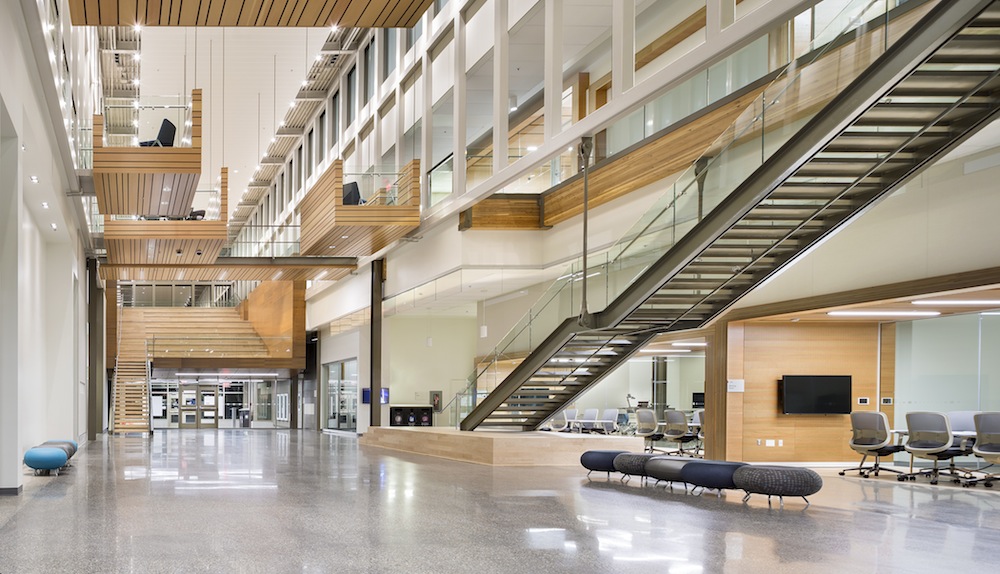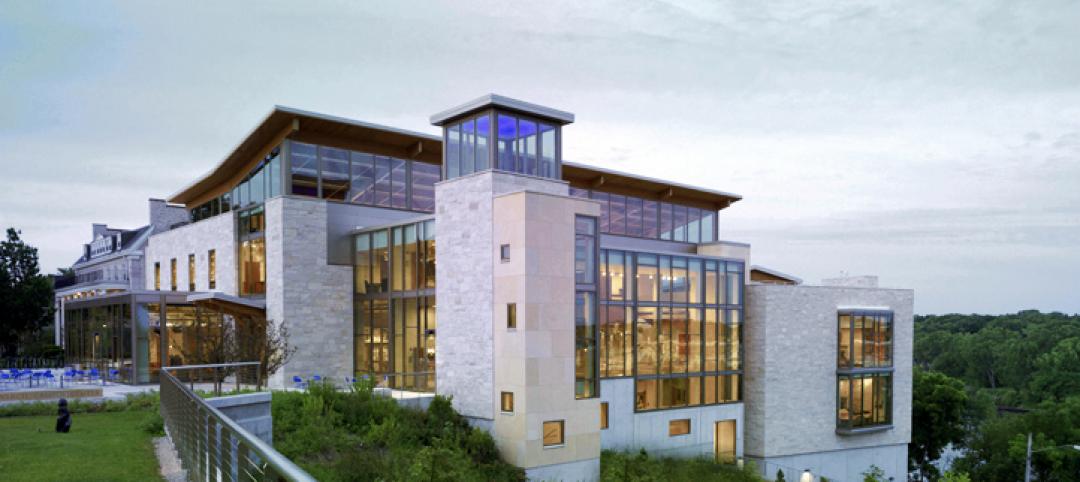Like many university buildings, the concept of student and faculty collaboration is stressed at the University of Calgary. For its new Taylor Institute for Teaching and Learning, Toronto-based architect Diamond Schmitt Architects wanted to make it as easy as possible to achieve that.
The “spine” of the building, a large light-filled space featuring two cantilever projections, can be reconfigured on a day-to-day basis. By using mobile technology and popping out some hidden seats, students and faculty can make the spine a 400-seat theater, a flat-floor gathering spot, a teaching lab, or a community meeting area—whatever is needed.
“The spine is simple in its clarity, but certainly not in its design,” Diamond Schmitt Principal and Project Architect, Matthew Lella, said in a statement. “Vierendeel trusses don’t have diagonal beams, which allows for enhanced visibility through clerestory glass.”
The rest of the building plays off the spine, with an amphitheatre, “hanging pods” (six- to eight-person study rooms), learning studios, and outdoor social areas attached to the space.
The Taylor Institute opened on April 18. Diamond Schmitt is the design architect and Gibbs Gage is the architect of record.
Related Stories
| Sep 14, 2011
Research shows large gap in safety focus
82% of public, private and 2-year specialized colleges and universities believe they are not very effective at managing safe and secure openings or identities.
| Sep 7, 2011
KSS Architects wins AIA NJ design award
The project was one of three to win the award in the category of Architectural/Non-Residential.
| May 18, 2011
Major Trends in University Residence Halls
They’re not ‘dorms’ anymore. Today’s collegiate housing facilities are lively, state-of-the-art, and green—and a growing sector for Building Teams to explore.
| May 18, 2011
Raphael Viñoly’s serpentine-shaped building snakes up San Francisco hillside
The hillside location for the Ray and Dagmar Dolby Regeneration Medicine building at the University of California, San Francisco, presented a challenge to the Building Team of Raphael Viñoly, SmithGroup, DPR Construction, and Forell/Elsesser Engineers. The 660-foot-long serpentine-shaped building sits on a structural framework 40 to 70 feet off the ground to accommodate the hillside’s steep 60-degree slope.
| Apr 13, 2011
Duke University parking garage driven to LEED certification
People parking their cars inside the new Research Drive garage at Duke University are making history—they’re utilizing the country’s first freestanding LEED-certified parking structure.
| Apr 12, 2011
Rutgers students offered choice of food and dining facilities
The Livingston Dining Commons at Rutgers University’s Livingston Campus in New Brunswick, N.J., was designed by Biber Partnership, Summit, N.J., to offer three different dining rooms that connect to a central servery.
| Apr 12, 2011
College of New Jersey facility will teach teachers how to teach
The College of New Jersey broke ground on its 79,000-sf School of Education building in Ewing, N.J.
| Mar 23, 2011
After 60 years of student lobbying, new activity center opens at University of Texas
The new Student Activity Center at the University of Texas campus, Austin, is the result of almost 60 years of students lobbying for another dedicated social and cultural center on campus. The 149,000-sf facility is designed to serve as the "campus living room," and should earn a LEED Gold certification, a first for the campus.















